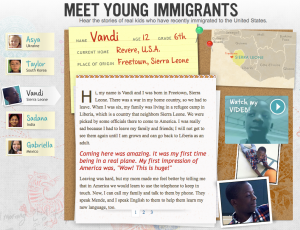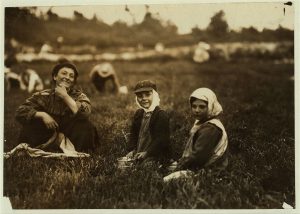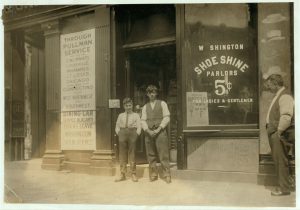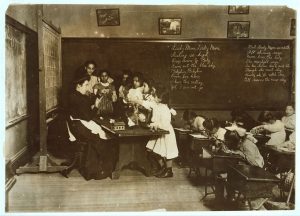This elementary school lesson engages students with primary source materials that make vivid the journeys and lives of immigrant children in the early 20th century and today. It features video interviews with kids who have recently immigrated and archival photos of child immigrants from the turn of the 20th century.
 Primary source interviews with five recent immigrants to the US from 2010.
Primary source interviews with five recent immigrants to the US from 2010.
Timothy Sheehan, the lesson plan’s author, writes:
 Syrian immigrant children picking cranberries in Massachusetts, 1911.
Syrian immigrant children picking cranberries in Massachusetts, 1911.
“Fourth graders are just beginning to develop a sense of the larger world around them, as well as learn about the interactions of human beings with each other and the environment. One topic that is new to them is immigration. This multi-day lesson is designed to help them examine immigration from their own perspective. Currently, the most readily available historical materials for children focus on the wave of immigration to America during the late 1800s through the early 1900s. This lesson will help them to examine historical primary source documents and compare and contrast the lives of immigrant children at that time period with those of today. By focusing on the lives of children, they will better be able to develop an understanding of and empathy for the immigrant experience.”
 Greek illiterate teen boys at shoe shine two months since arriving in US, 1912
Greek illiterate teen boys at shoe shine two months since arriving in US, 1912
The lesson is designed to help elementary school students learn from primary and secondary sources, and also uses historical fiction and imaginative prompts to develop understanding and empathy for the immigrant experience. Several primary sources picture children who arrived in the US not knowing English, making this accessible lesson one that has direct relevance to English learners in the classroom. The lesson plan includes a Universal Design for Learning (UDL) chart, examples of a double-bubble Thinking Map chart and an Inquiry Chart.
The lesson plan (link here) was developed through the Library of Congress’s Teaching with Primary Sources initiative. Access our online library of lesson plans and teaching resources.




